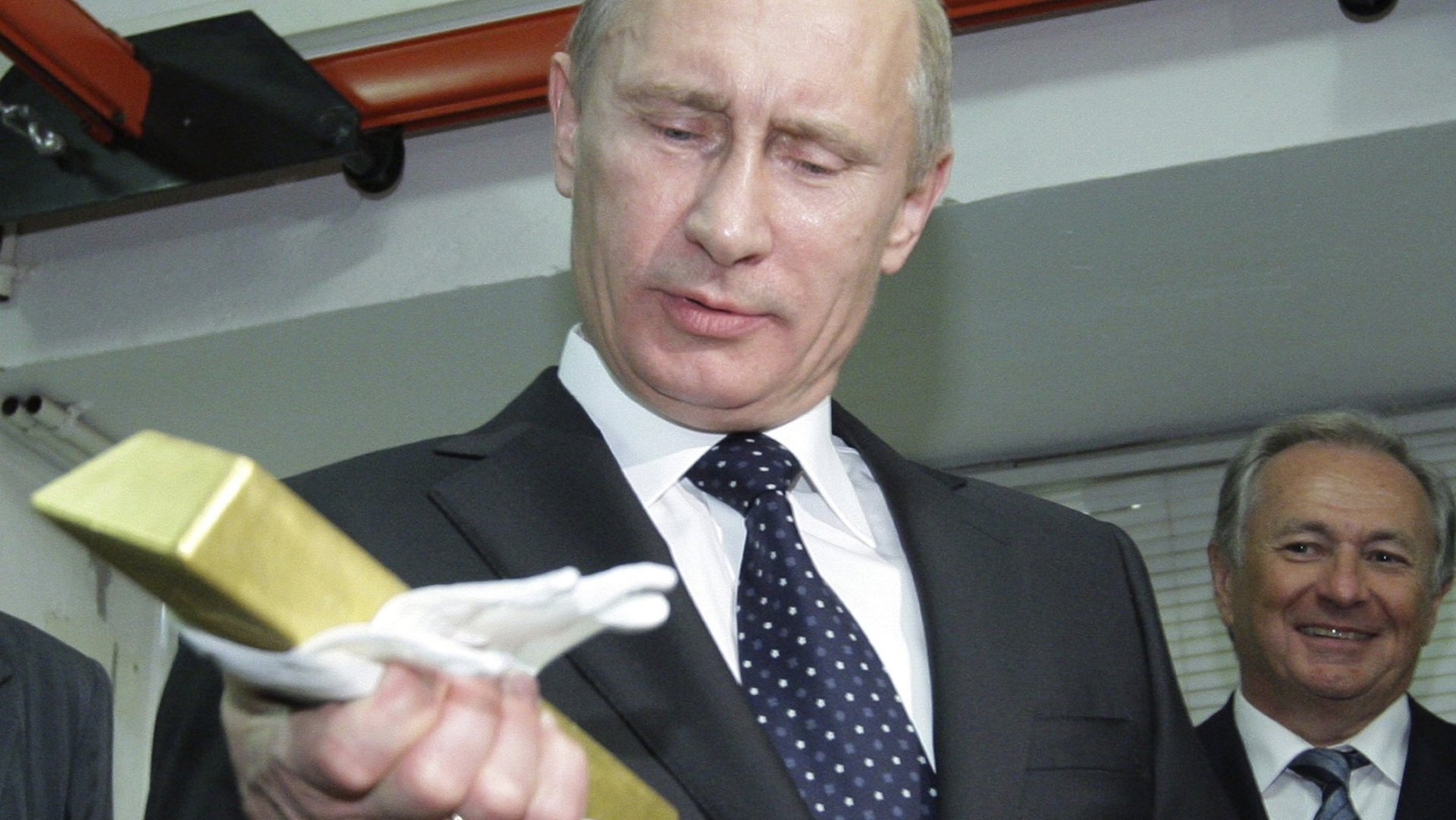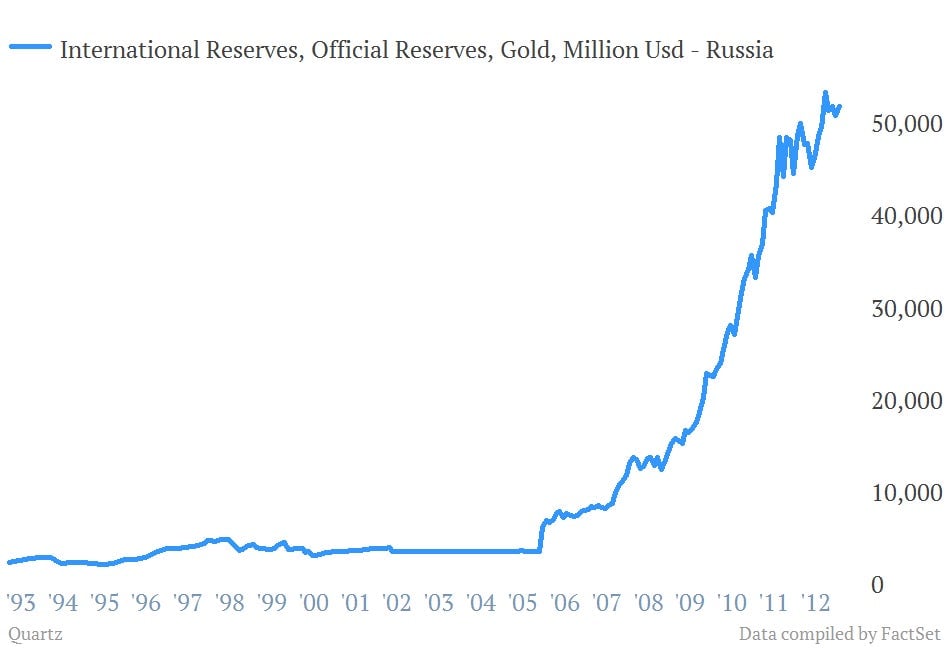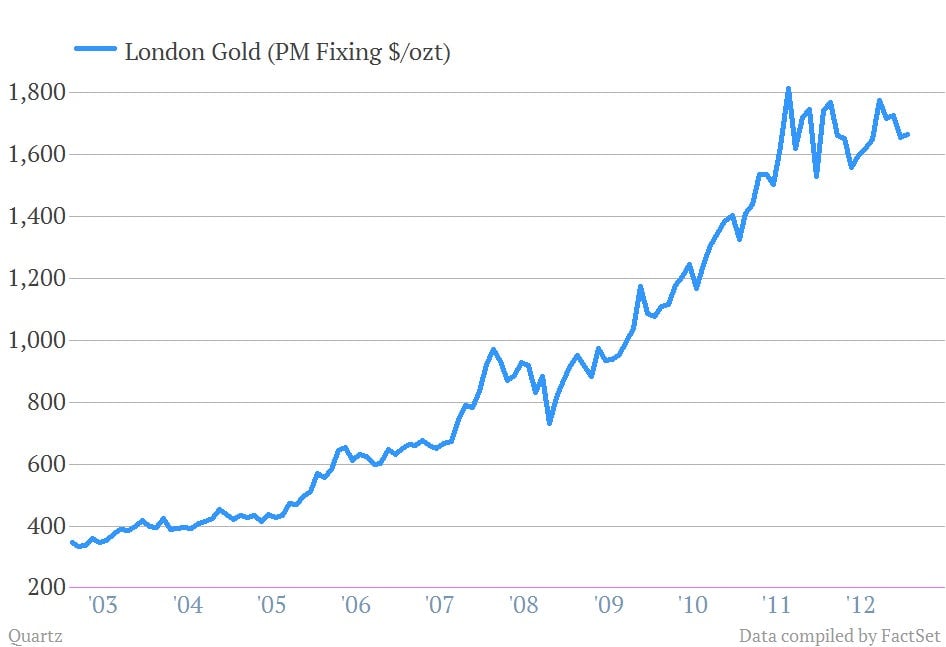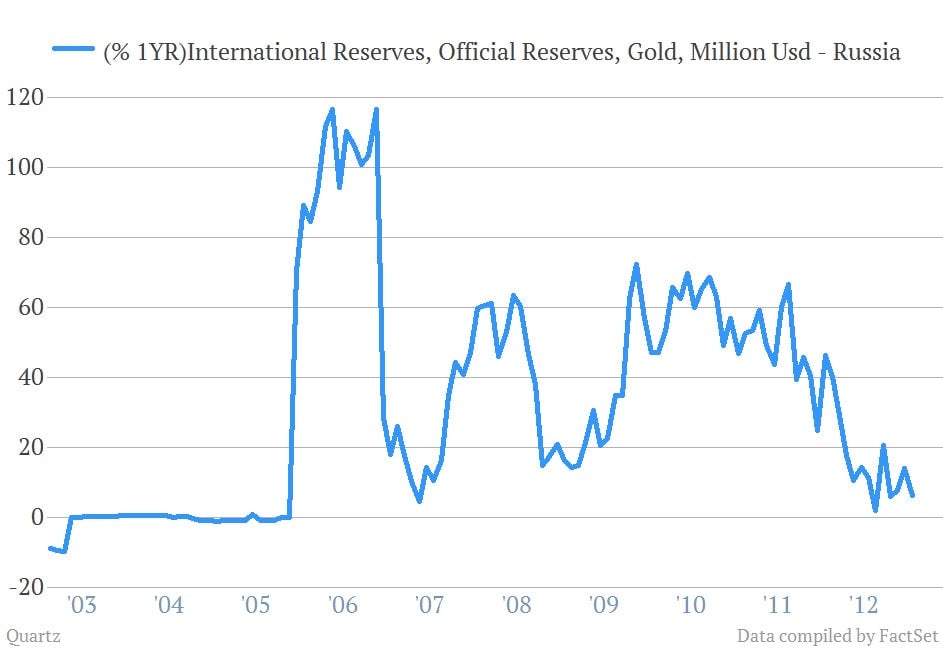Russia’s government has become the world’s largest buyer of gold, driven by fears of currency cataclysm
Russian President Vladimir Putin has been loading up on gold. As Bloomberg reports, the Russian central bank has amassed 570 metric tons of it in the last 10 years, making it the biggest global gold buyer.


Russian President Vladimir Putin has been loading up on gold. As Bloomberg reports, the Russian central bank has amassed 570 metric tons of it in the last 10 years, making it the biggest global gold buyer.
Why is Russia’s central bank betting on gold rather than holding its foreign reserves in something with a bit of yield? It’s a hedge against a collapse in the value of one of the global reserve currencies. “The more gold a country has, the more sovereignty it will have if there’s a cataclysm with the dollar, the euro, the pound or any other reserve currency,” Evgeny Fedorov, a lawmaker for Putin’s United Russia party, told Bloomberg.

Russia’s not the only one that’s been hoarding gold, though. China is the next runner up, having added one-quarter less than Russia, according to Bloomberg. Ambrose Evans-Pritchard argues that this is of a piece with what he calls a “new gold standard“:
The central bank buyers are of course the rising powers of Asia and the commodity bloc, now holders of two thirds of the world’s $11 trillion foreign reserves, and all its incremental reserves. It is no secret that China is buying the dips, seeking to raise the gold share of its reserves well above 2pc. Russia has openly targeted a 10pc share. Variants of this are occurring from the Pacific region to the Gulf and Latin America.
Putin kicked off the buying binge in 2005, when oil-per-ounce-of-gold ratio fell to around 6.5 barrels, down from 11.5 when Putin took power in 2000, according to Bloomberg. That parallels the ascent in gold prices, as it happens:

And will this emerging-market gold rush threaten the status of the dollar and other currencies as a global reserve holding?
That seems unlikely. If the price is anything to go by—gold hovered within a range of $1,530 and around $1,770 dollars per ounce in the last two years—if anything, emerging market demand has cooled off a bit. For one thing, there’s the slowdown in central bank buying. As economics blogger Scott Grannis points out, China’s central bank hasn’t been buying of late—it has overseen a dramatic tapering-off in China’s forex accumulation, including gold.
But even Russia’s demand looks to have leveled off of late. And, as of the end of January, its reserves stood at around $532 billion, of which almost $52 billion was in gold, according to FactSet—close to its 10% goal.

Aside from central banks, retail buyers in emerging markets are a key source of demand. With its central bank backed off of buying, China’s gold demand likely derives primarily from Chinese retail investors. And as we’ve recently explored, Indians are piling up the yellow metal as well. That would mean that the rise in gold prices since 2005 is as much the story of growing emerging market prosperity as is is one about fear of rampant devaluations of the dollar and other currencies.
And though Russia’s central bank and Chinese and Indian retail buyers may continue to binge, the biggest producers—China, Australia, the US, Russia and South Africa (pdf) mine the most gold right now—will continue to step up production, evening out the demand.